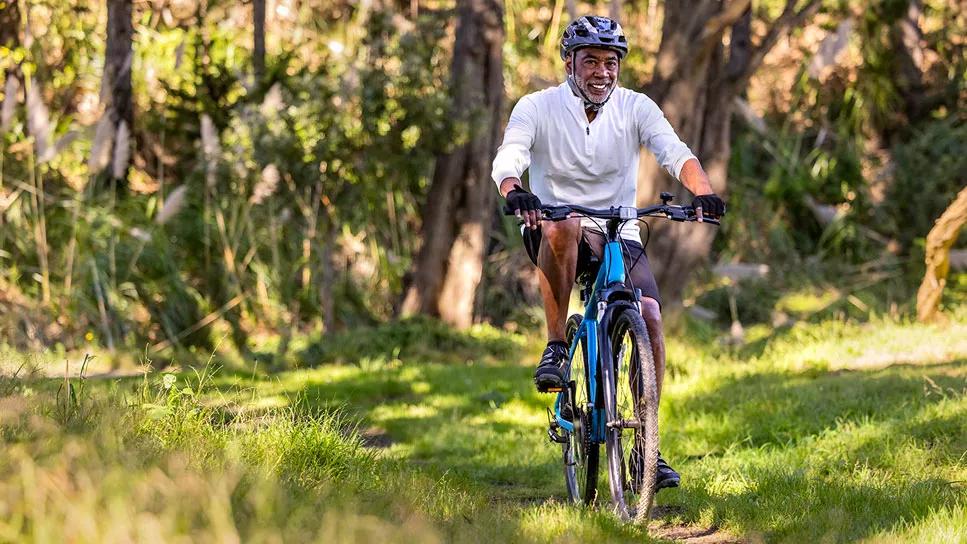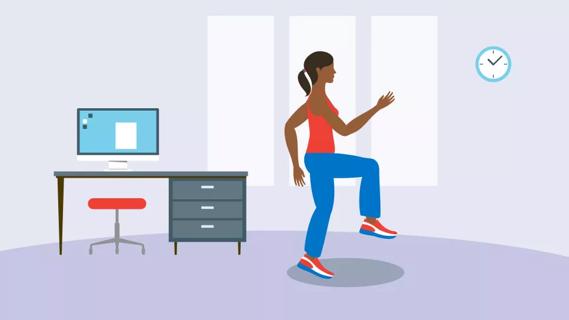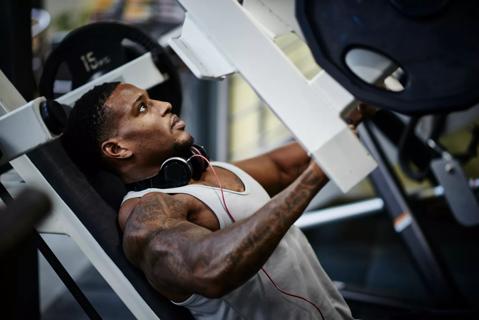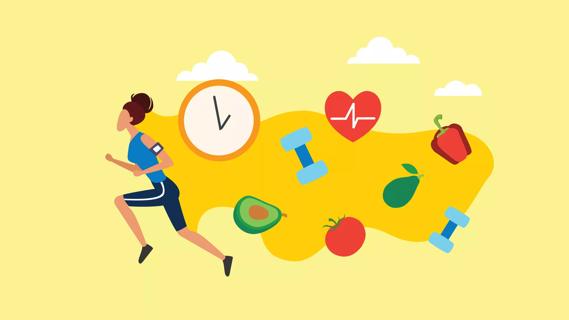From gardening to walking for 30 or more minutes, you want to get your heart rate up 50% to 60%

If you talk to a healthcare provider or read any physical fitness tips online, you’re likely to come across the phrase “moderate-intensity exercise.” You may have had this type of exercise recommended to you if you’re currently pregnant, just getting started on a workout routine or because of your overall health history.
Cleveland Clinic is a non-profit academic medical center. Advertising on our site helps support our mission. We do not endorse non-Cleveland Clinic products or services. Policy
But you may be wondering what even counts as “moderate-intensity exercise”? And how do you know if you’re getting the benefits of working out?
Exercise physiologist Christopher Travers, MS, explains what moderate exercise means and how you can implement it into your lifestyle.
In short, moderate-intensity activity is usually made up of exercises that get your heart rate up to 50% to 60% higher than its rate when you’re at rest. This means these physical activities make your heart beat a little faster and your breathing a bit harder. It’s like a level of exercise that feels somewhat challenging, but you’re not completely exhausted.
And the good news is, you can easily calculate it for yourself and find activities that fall into the moderate-intensity category, but still give your body a good sweat.
For example, when you go for a brisk walk or ride your bike at a steady pace, that’s considered moderate-intensity exercise. It’s a good way to stay healthy and active without pushing yourself too hard.
“Different groups have slightly different recommendations,” explains Travers. “But in general, we advise 150 minutes per week, or about 30 minutes five days a week, of moderate-intensity activity. In the exercise world, we consider this anything that gets your heart rate up to 50% to 60% higher than your resting heart rate.”
What does that activity look like? You may be surprised which exercises fall into the moderate-intensity range. A lot of it also depends on how long you’re doing the exercises, Travers adds.
All of the following fit the moderate-intensity definition of exercise:
Other activities you might not even think of as exercise fit the “moderate-intensity” definition, too. These may include:
“Ten minutes is the minimum amount of time you need to get the benefits of cardiovascular exercise,” Travers shares. “I often tell patients to start with 10 to 20 minutes of any activity, and then, work your way up. If you’ve been living a sedentary life, or if you have medical conditions that limit your activity, you need to ease yourself into fitness and see how your body responds.”
When you’re crafting an overall fitness plan, be sure to incorporate strength training, too. Strength training helps with joint flexibility, increases muscle mass and increases bone density. Not only that, but your body also burns calories more easily, which, in turn, helps with weight management.
If you’re still confused about whether what you’re doing is moderate-intensity exercise, your heart rate and breathing rate will give you the answer. This means: Listen to your body.
For example, a simple way to tell if you’re in the moderate-intensity zone is by using the “talk test.” “When exercising at moderate intensity, you should be able to talk to others without gasping for air,” explains Travers. “Speaking will take a little more effort than usual, but you should be able to carry on a conversation.”
But if you want to be more scientific, you can start by defining your resting heart rate. You can do this by taking your pulse when you first wake up in the morning. Doctors and exercise specialists use the Karvonen formula to figure out your target heart rate for exercise. To find your target heart rate, start by calculating the following:
For example, a 50-year-old woman has a resting heart rate of 70. She wants to exercise at 50% intensity — the low end of the moderate-intensity range of 50% to 60%. The formula looks like this:
“If you’re interested in using formulas and heart rate monitors, I encourage their use,” Travers recommends. “A doctor or exercise specialist can even help you get started. If you prefer to skip the math and just incorporate the exercises above or others into your life, and you’re healthy enough to do so, you are still on the right track.”
Moderate-intensity exercise is a great way to have a balanced fitness routine while not pushing yourself too hard. Especially if you’re just starting or you have certain health conditions that affect the way you react to exercise, it’s good to make sure you’re choosing moderate-intensity activities.
If you don’t know where to start with a fitness plan, talk to a healthcare provider or exercise physiologist who can help recommend exercises to help get you started on your fitness journey.
Learn more about our editorial process.

Chair exercises can help people age 65+ retain independence

Both are needed for a healthy body

Counteract psoas muscle stiffness and soreness with stretches that lengthen and strengthen

It may be OK, depending on your health, fitness level and type of exercise

Simple exercises like wall angels and pelvic tilts can help keep your body in an optimal position — and help undo years of improper posture habits

Losing belly fat can reduce your risk for chronic health conditions — try focusing on a diet high in lean protein, exercising regularly, reducing stress and getting quality ZZZs

It’s best to exercise before or after your fast, instead of during it

Absolutely! In fact, in many ways, exercise is key to recovery

Your metabolism may torch 1,300 to 2,000 calories daily with no activity

A gentle touch in all the right places may help drain your sinuses